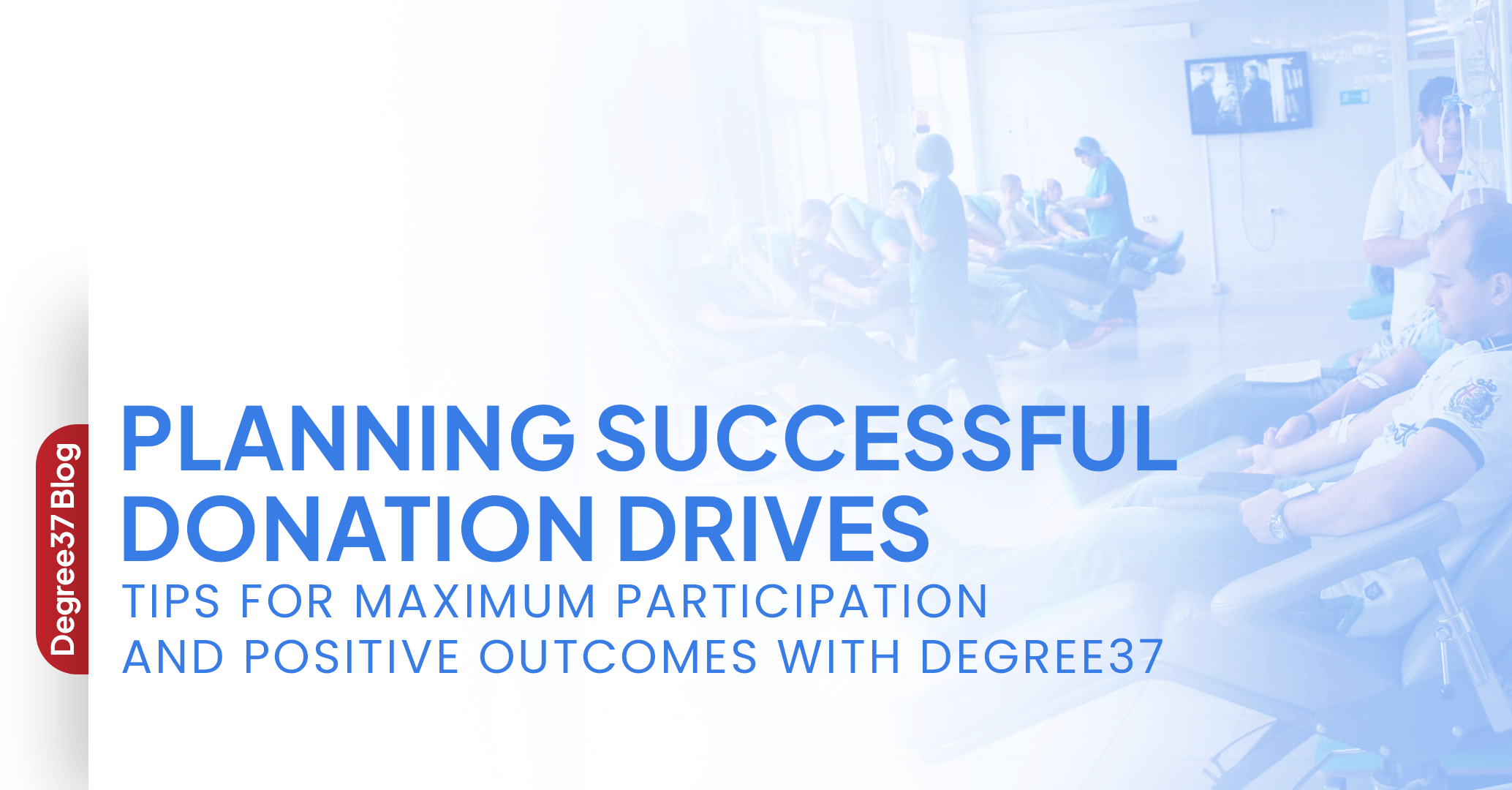Blood donation is a life-saving act. Every pint of blood can help up to three patients in need. Yet, with a constant demand for blood and blood products, maintaining a reliable supply can be a challenge. This is where successful donation drives become crucial in bridging the gap and ensuring a steady stream of blood for those who critically need it.
Organizing a donation drive takes more than just securing a venue and putting out flyers. To maximize participation and achieve positive outcomes, careful planning and execution are essential.
This blog post will equip you with the knowledge and tools needed to plan and hold a successful donation drive. From initial planning to post-drive follow-up, we’ll cover everything you need to know to make a difference.
1. Define Your Goals Clearly
Before diving into logistics, it’s crucial to define the objectives of your donation drive. Are you collecting blood, clothing, or monetary donations? Are you targeting a specific community or demographic? Setting clear goals helps in crafting a focused strategy and measuring success.
Example: If you’re organizing a blood donation drive, specify the number of units of blood you aim to collect. If it’s a clothing drive, set a target for the amount of clothing items.
2. Know Your Audience
Understanding your target audience is essential for effective outreach. Different demographics respond to different types of communication. Tailoring your messaging to resonate with your audience will increase engagement and participation.
For instance: A blood donation drive might target local community groups, schools, or workplaces. Using targeted communication channels like social media, email newsletters, and local community boards will help in reaching out to potential donors effectively.
3. Utilize Social Media and Digital Platforms
Social media is a powerful tool for spreading the word about your donation drive. Create engaging posts that highlight the cause, share impactful stories, and provide clear instructions on how to participate. Use visuals like photos and videos to capture attention and make your campaign more relatable.
Digital platforms can also help streamline the donation process. Consider using a blood donor management CRM to manage donor information, track donations, and schedule appointments. This technology enhances efficiency and ensures that no potential donor is overlooked.
4. Engage Your Community
Engaging the community is key to a successful donation drive. Partner with local businesses, schools, and community centers to spread the word. Hosting small events or information sessions can also help in rallying support.
Community Engagement Tips:
Host Awareness Events: Organize events to educate people about the importance of the donation drive.
Collaborate with Influencers: Partner with local influencers who can promote your cause to their followers.
Involve Volunteers: Recruit and train volunteers who can help with organizing and running the drive.
5. Create a Compelling Campaign
A compelling campaign captures attention and drives action. Use a mix of storytelling and information to convey the impact of the donations. Highlight personal stories, statistics, and the tangible benefits of participating.
Campaign Elements:
Catchy Tagline: Create a memorable slogan that reflects the essence of your drive.
Visual Content: Use graphics, infographics, and videos to illustrate the impact of donations.
Call to Action: Include clear and compelling calls to action in all your communications.
6. Plan Logistics Carefully
Effective logistics planning ensures that the donation drive runs smoothly. This includes selecting a suitable location, arranging transportation for donated items, and setting up a clear schedule for the drive.
Logistics Checklist:
Location: Choose a convenient and accessible location for donors.
Timing: Schedule the drive at a time when potential donors are available.
Resources: Ensure you have all the necessary resources like donation bins, volunteers, and transportation.
7. Monitor and Evaluate
Monitoring and evaluating the donation drive helps in understanding its effectiveness and areas for improvement. Keep track of metrics like the number of participants, the amount of donations collected, and feedback from donors.
Evaluation Metrics:
Participation Rates: Measure the number of donors and the frequency of their participation.
Feedback: Collect feedback from participants to understand their experience.
Impact Assessment: Evaluate the overall impact of the drive on the community or the cause it supports.
8. Follow Up and Show Appreciation
Following up with donors and showing appreciation is crucial for maintaining a positive relationship and encouraging future participation. Send thank-you notes or emails, and share updates on how their donations have made a difference.
Follow-Up Tips:
Thank-You Messages: Send personalized thank-you messages to all participants.
Impact Reports: Share reports or stories showcasing the impact of the donations.
Ongoing Engagement: Keep donors informed about future events or drives.
9. Utilize Technology for Better Management
Incorporating technology into your donation drive can streamline operations and enhance efficiency. Tools like a blood donor management CRM can help manage donor information, track donations, and improve overall coordination. These systems provide valuable insights and help in maintaining organized records, making it easier to manage large-scale donation drives.
10. Adapt and Innovate
Every donation drive is an opportunity to learn and grow. Be open to feedback and willing to adapt your strategies based on what works and what doesn’t. Innovation can help in overcoming challenges and improving the effectiveness of your drive.
Innovation Ideas:
Digital Platforms: Explore new digital platforms for outreach and engagement.
New Formats: Experiment with different formats or themes for your drive.
Collaborations: Partner with other organizations or influencers to expand your reach.
Planning a successful donation drive involves careful preparation, strategic outreach, and effective management. By defining clear goals, understanding your audience, leveraging social media, engaging the community, and utilizing technology, you can maximize participation and achieve positive outcomes. Remember to monitor and evaluate your efforts, show appreciation to your donors, and be open to innovation. With these tips, your donation drive can make a meaningful impact and bring positive change to those in need.
By implementing these strategies, you’ll be well on your way to organizing a successful and impactful donation drive.
